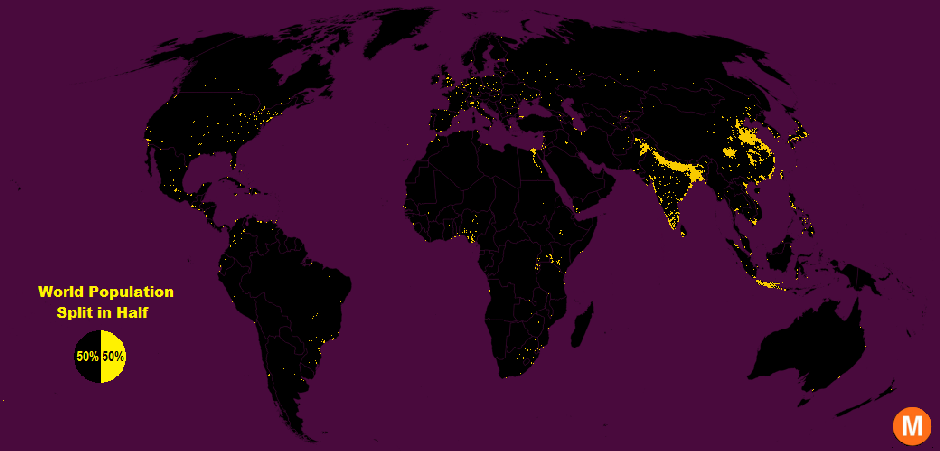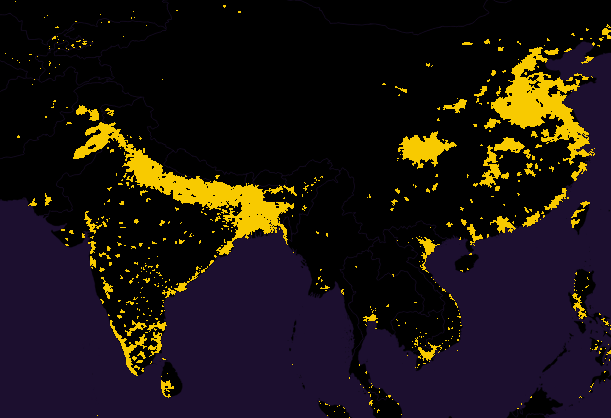General Discussion
Related: Editorials & Other Articles, Issue Forums, Alliance Forums, Region ForumsHalf the World Lives on 1% of Its Land, Mapped
CityLab:In the simple map above lies a stark spatial imbalance: half the people in the world cram into just 1 percent of the Earth’s surface (in yellow), and the other half sprawl across the remaining 99 percent (in black).
Data viz extraordinaire Max Galka created this map using NASA’s gridded population data, which counts the global population within each nine-square-mile patch of Earth, instead of within each each district, state, or country border. Out of the 28 million total cells, the ones with a population over 8,000 are colored in yellow. That means each yellow cell has a population density of about 900 people per square mile—“roughly the same population density as the state of Massachusetts,” Galka writes in the accompanying blog post. The black regions, meanwhile, reflect sparser population clusters.

Take this close-up of South and East Asia. The region in this image alone contains about 46 percent of the world’s population, which isn’t all that surprising considering India and China are the two most populous countries in the world.

Asia’s densest spots are mostly concentrated in the inland urban areas. Europe, on the other hand, is nowhere as dense as Asia but has its population hotspots sprinkled more uniformly across its area:

SoLeftIAmRight
(4,883 posts)We live on the air, water , food
that is the foot print
yeoman6987
(14,449 posts)the World population can fit in Texas. However, then what?
Bucky
(54,041 posts)I'll sure need to go shopping if that much company is coming over.
Oneironaut
(5,519 posts)I've heard the same argument as well. It doesn't matter if earth were the size of the sun - it's the amount of resources the planet has that matters. Without resources, a lot of land is just more land to die on.
hfojvt
(37,573 posts)that at least part of the remaining 99% could be considered 'unlivable". Things like the Missouri River, Lake Superior, and smaller lakes and marshes cover some parts of it. Then there are mountain tops, thick jungles, deserts, ice covered steppes, and so on.
Of course, I often think the whole planet is unlivable. The only way I live on it is by creating an artificial world where I keep the wildlife, the moisture and the natural temperature out If the electricity goes out, I am in a world of hurt, almost any time of the year.